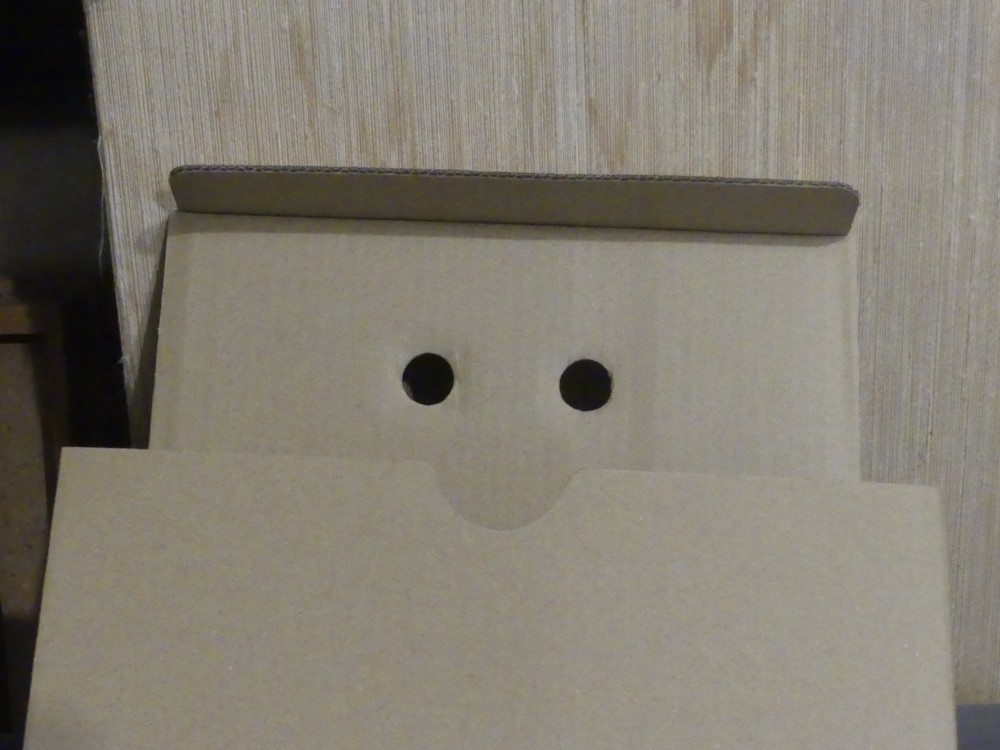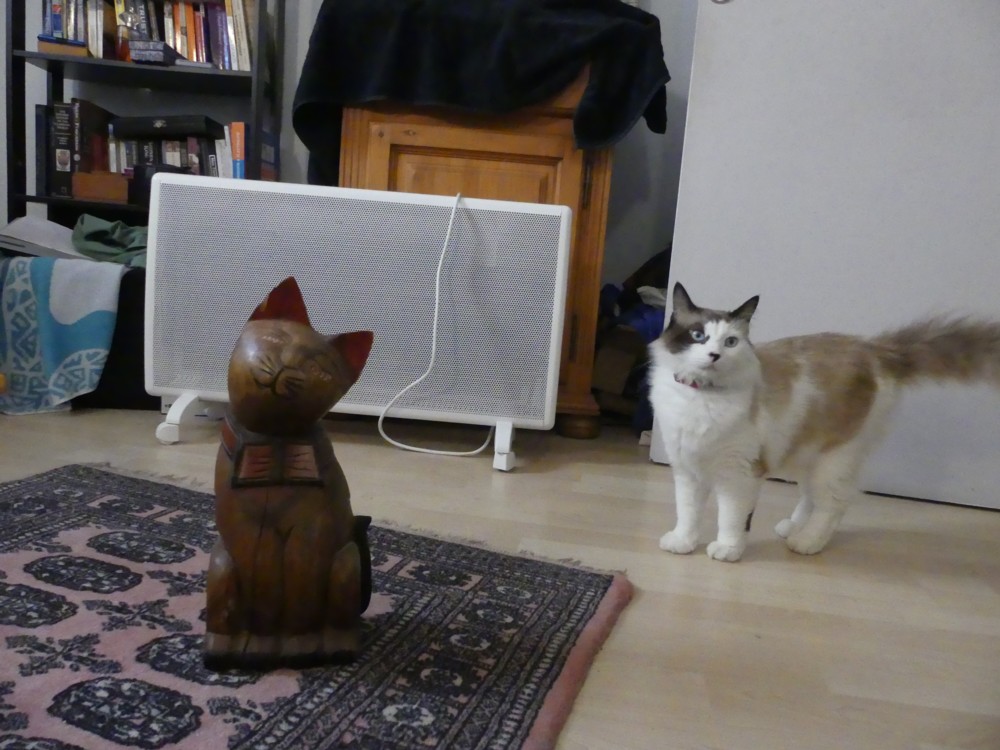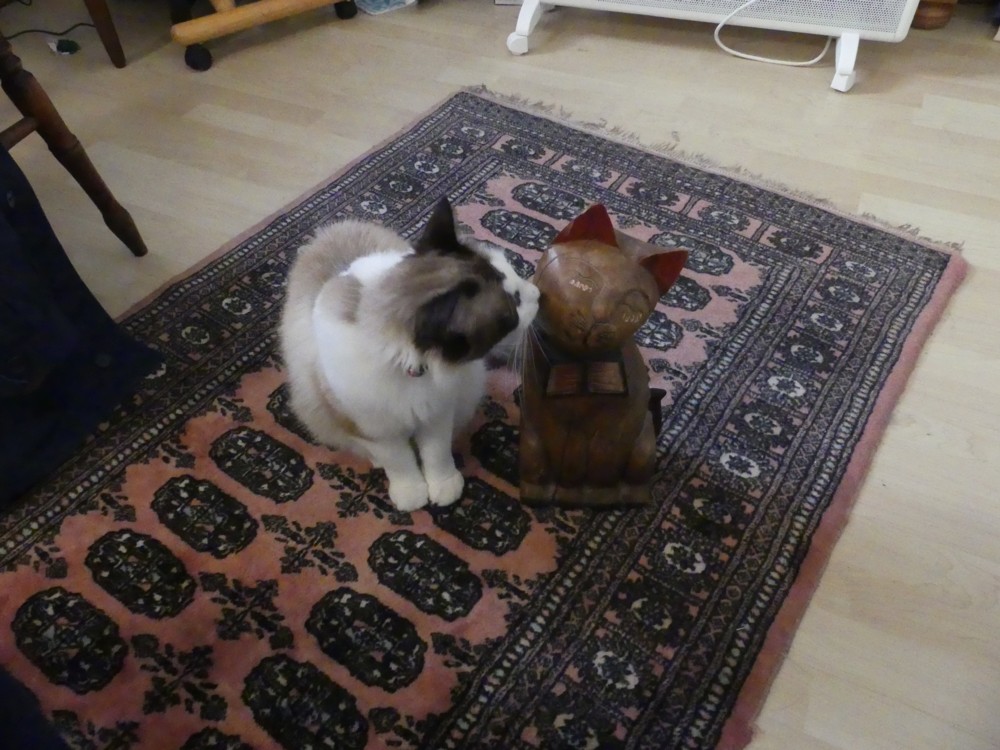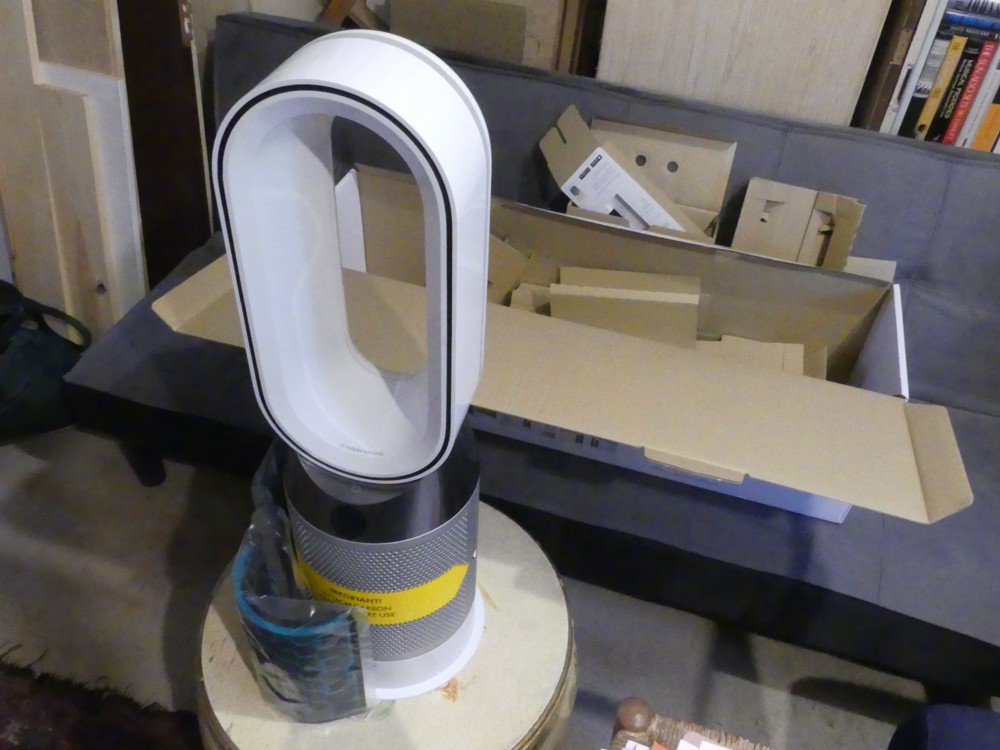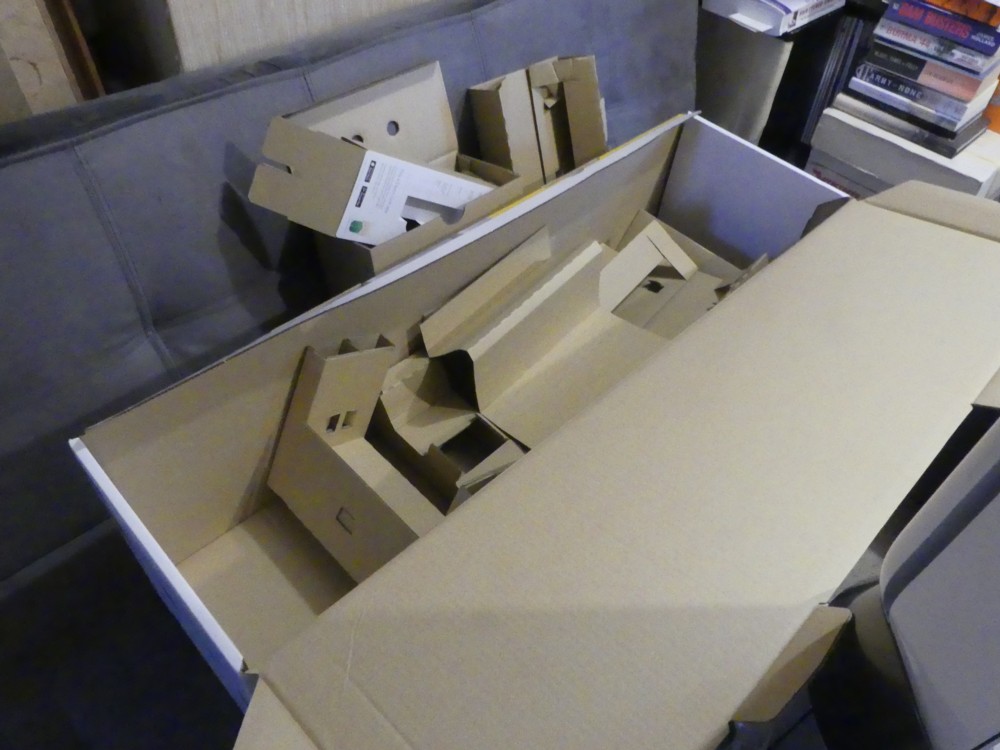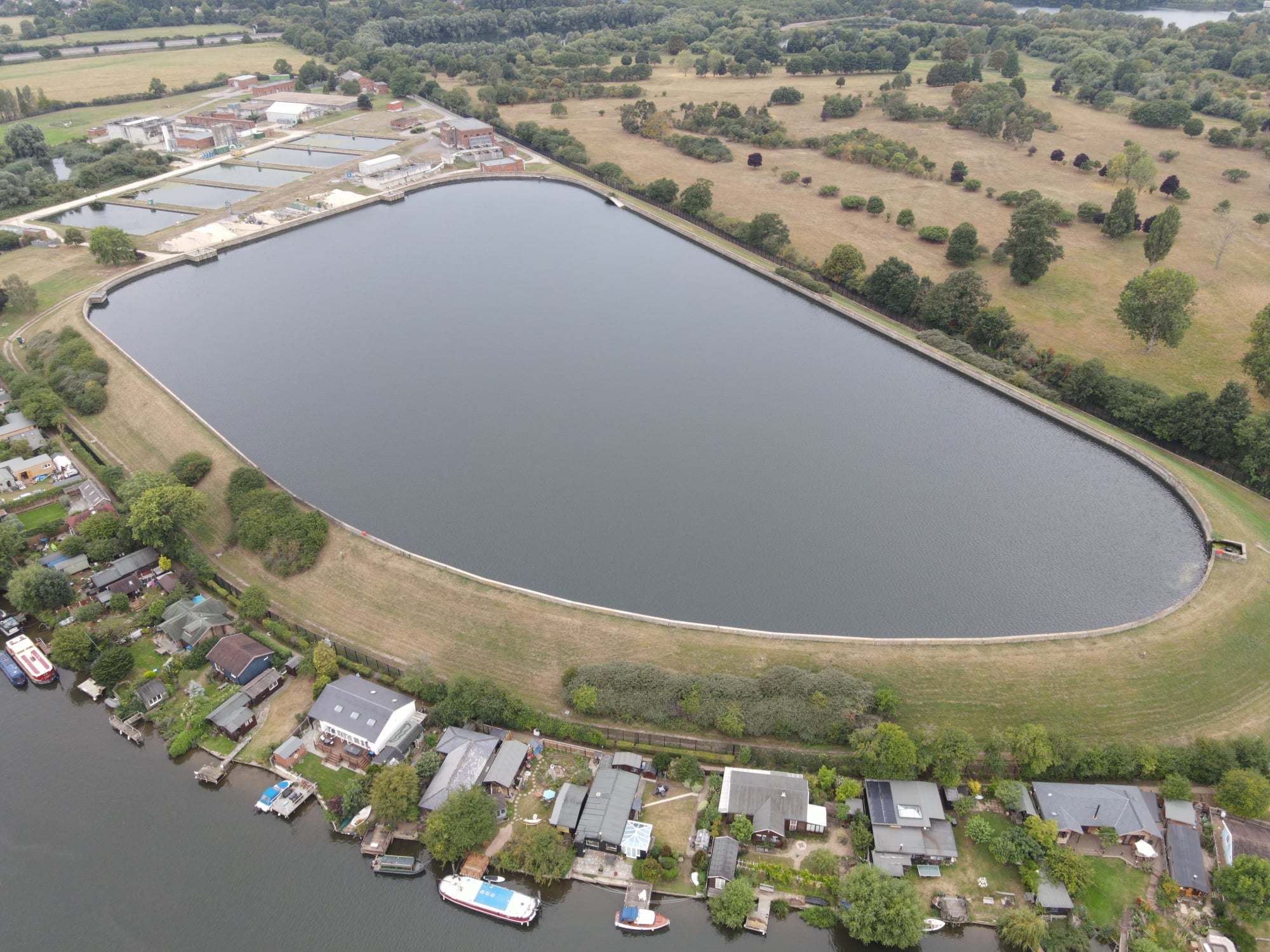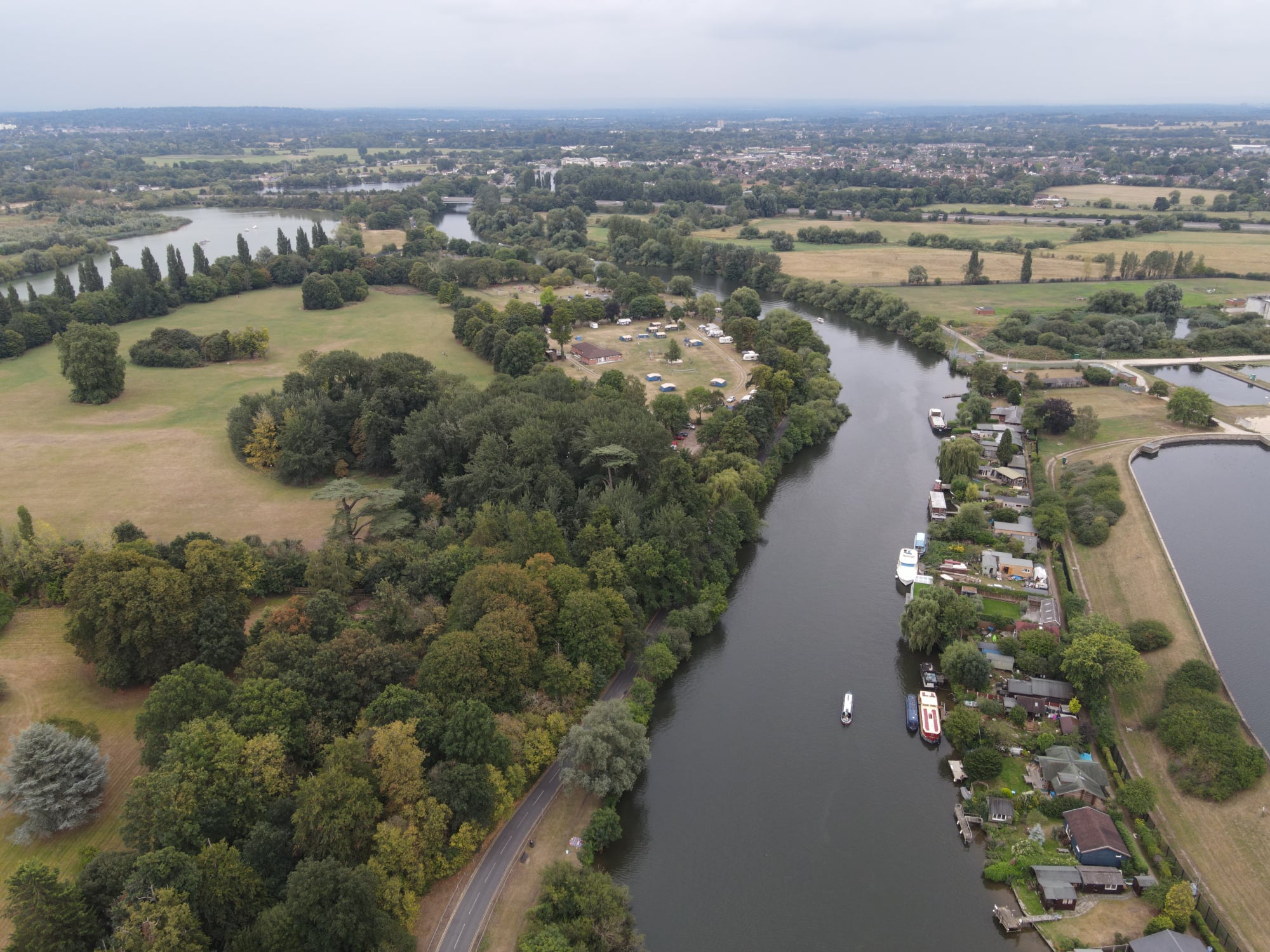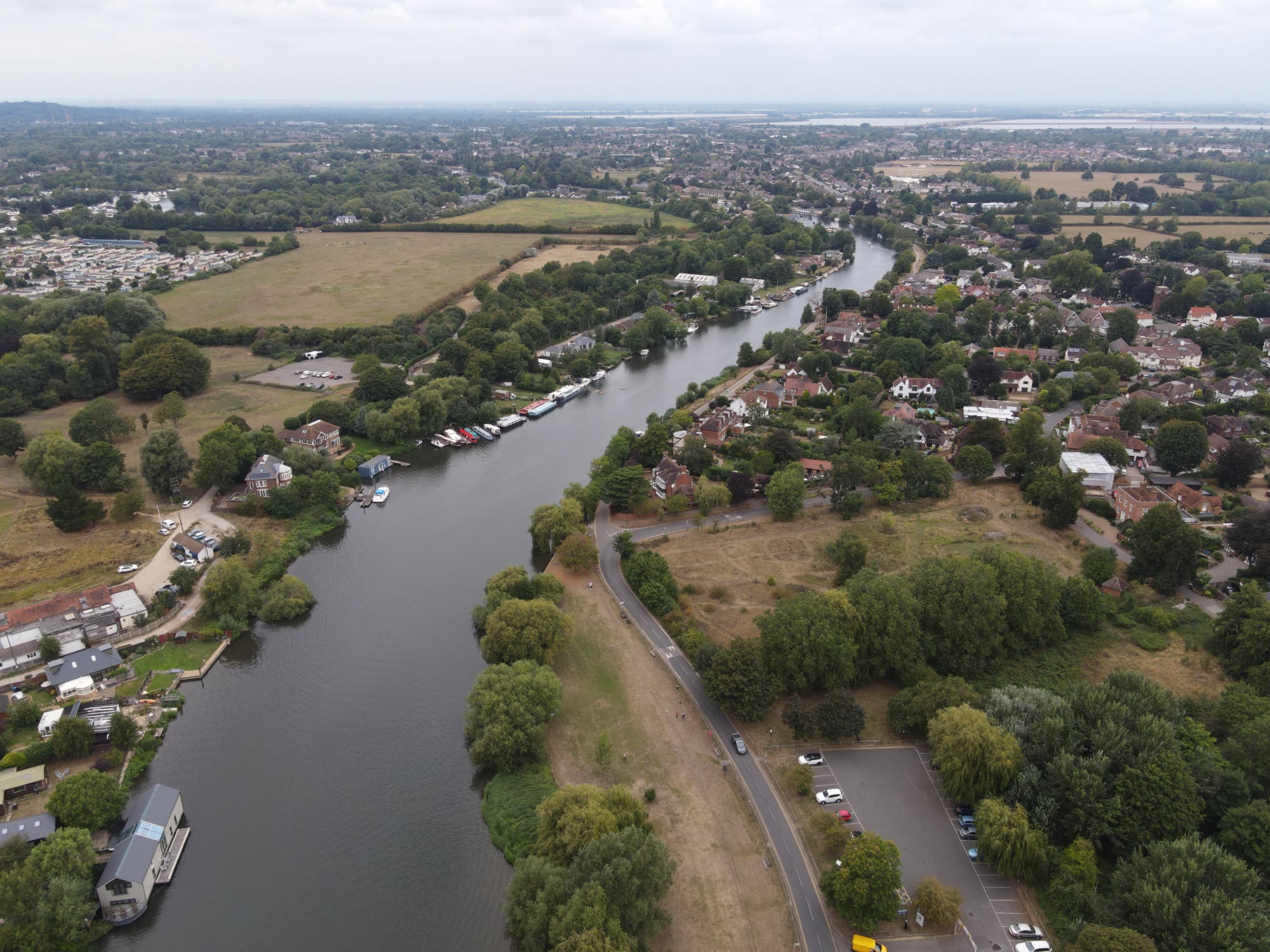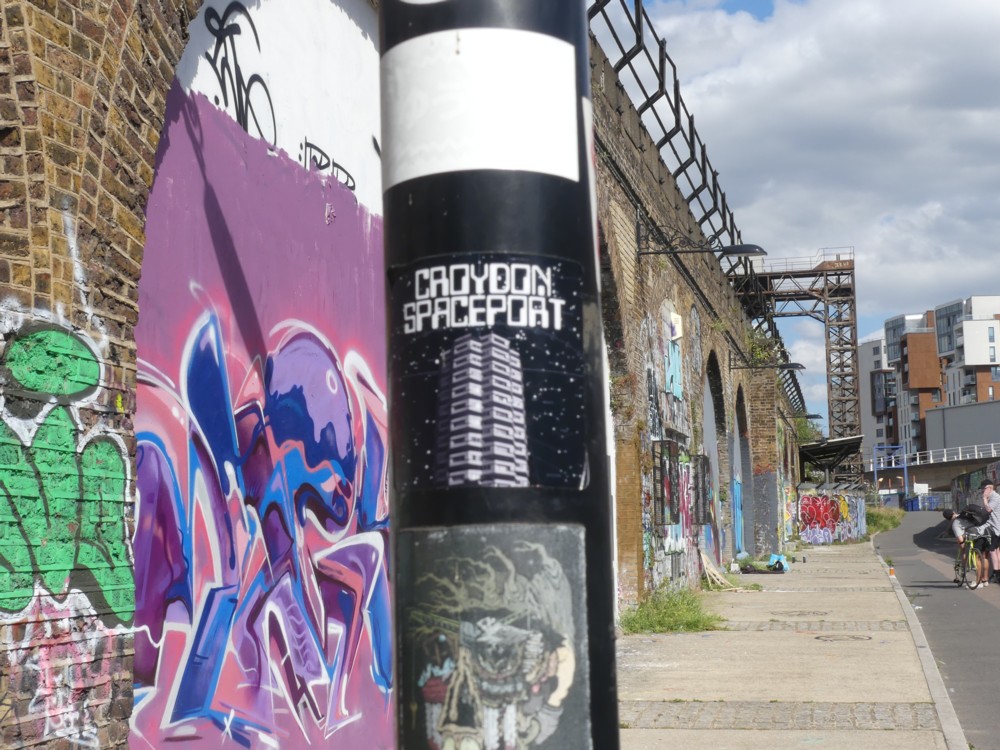And by outer suburbs, I mean the outer suburbs of London. Just the other side of the green belt:
I came across these on the Facebook page of a friend (Facebook friend and friend for real). I didn’t think I knew anyone possessing a drone, with a camera, which he has been using to take aerial photos of the non-countryside, near London, but it turns out I do. I really like these photos, especially the one of the midget reservoir.
I am blogger-friends with 6k, who displays the occasional drone photo. But that’s in Africa. Africa is like another continent.
If I tell you that it’s the River Thames in those photos, that narrows it down quite a lot, but not too much, I trust. That approximate location aside, I am of course being deliberately vague about telling you anything more about my near-London friend than that he’s my friend, and that I thank him for permission (just in case you were wondering) to reproduce some of his recent set of drone-photos here. The vagueness is because who knows what sort of trouble I might get him into, maybe with some non-friendly neighbour, if I was not so vague? I agree, it’s most unlikely that anyone will give a damn about me “publishing” these photos, but what if they do?
I wouldn’t dream of attempting anything like this inside the green belt. But if my friend wants to drop by and give it a go …
I would absolutely love to accompany him and his drone on a photo-expedition, just to see for myself exactly how obtrusive and obvious it all is, or not as the case may be. Just for starters, how noisy are these things? Does everyone in the vicinity of a drone which is doing its thing know it’s there? Can they then look for it, and see it? Or are drones like my friend’s one too small to see from any distance?
Someone sent me an email plugging this drone guide, a while back. I’ve not read it. Maybe I should.

